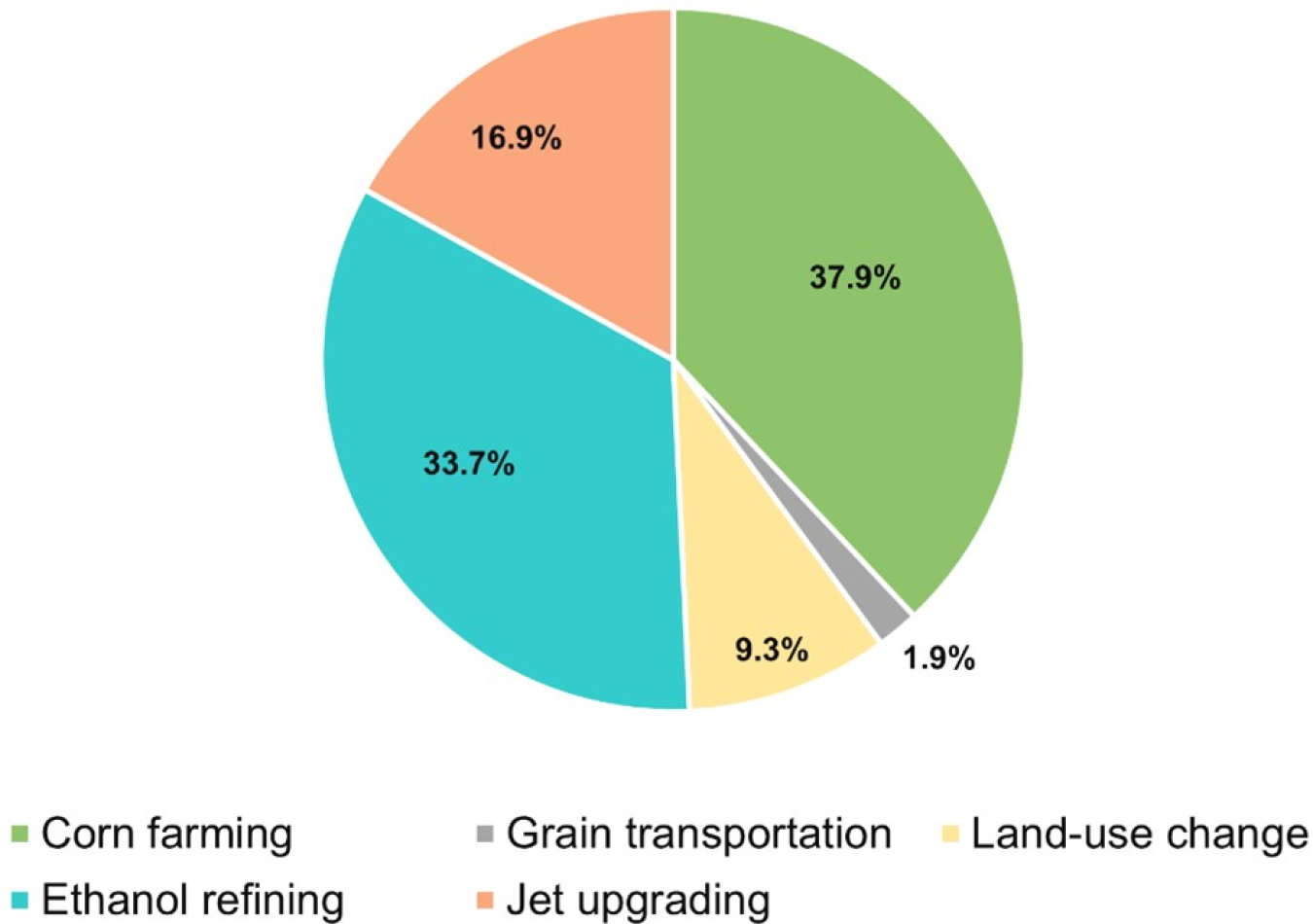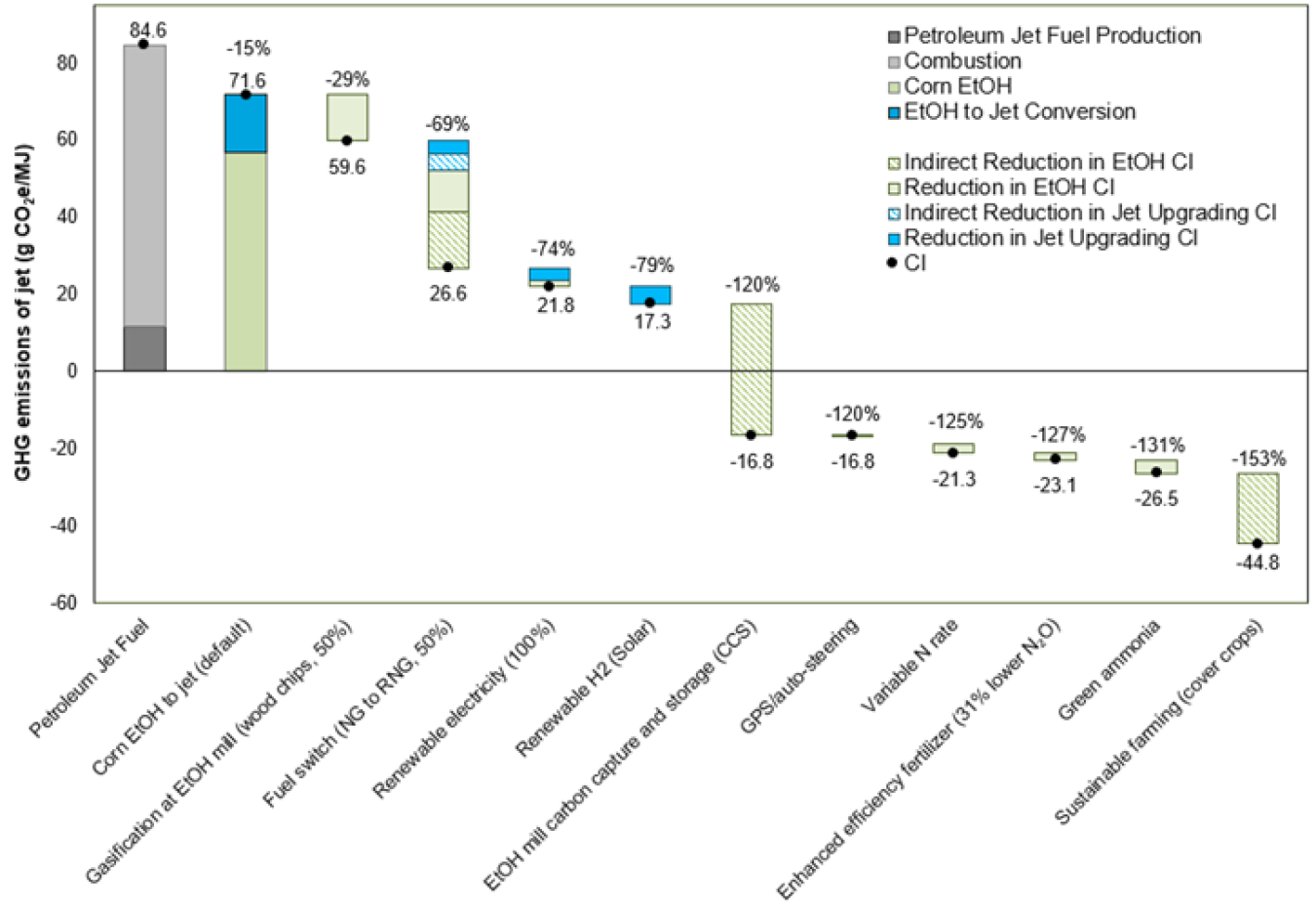
Author: Jim Spaeth
Program Manager, Systems Development and Integration
Read Jim's bio ►
Meet the other bloggers ►
Return to Bioprose blog ►
Not all of the challenge of reducing transportation-related greenhouse gas (GHG) emissions is found at the end of automobile tailpipes. The aviation sector currently accounts for more than ten percent of U.S. transportation-related GHG emissions. To address this issue, the White House recently announced a Sustainable Aviation Fuel (SAF) Grand Challenge to generate at least 3 billion gallons of SAFs by 2030 and, by 2050, sufficient SAFs to meet 100 percent of U.S. aviation fuel demand, currently projected to be around 35 billion gallons annually. Meanwhile, the International Air Transportation Association (IATA), which represents major global airlines, has committed to net-zero carbon emissions from global air transportation by 2050.
Replacing fossil jet fuels with SAFs has been recognized as a crucial and promising strategy to help the aviation industry meet its emissions reduction goals, diversify fuel supply, and enhance energy security. Major U.S. airlines have also pledged to work with the U.S. federal government and other stakeholders to rapidly advance the commercialization, deployment, and expansion of SAFs.
The technology needed for SAF production already exists, including ethanol-to-jet (ETJ) conversion technologies. Producing ethanol from corn is a mature technology, and life-cycle GHG emissions of corn ethanol have decreased by roughly a quarter in the past 15 years, excluding land-use change emissions. Compared to petroleum jet fuel, SAF produced from today’s corn ethanol also already offers a 15 percent lower carbon intensity. However, to achieve the industry’s net-zero objectives, additional significant GHG reductions are still needed.
To assess whether and how the ethanol-to-jet (ETJ) pathway may reach the net-zero emission target, Argonne scientists performed a life-cycle analysis (LCA) of corn to ethanol and then to jet fuel, using the Greenhouse gases, Regulated Emissions, and Energy use in Technologies (GREET)® model developed at Argonne. The GREET simulation covers the entire ETJ pathway, including corn farming, corn ethanol refining, jet fuel upgrading, and fuel transportation and consumption.
Starting with the current state of the domestic ethanol industry, the simulation evaluated a range of technologies and GHG management options applicable to corn farming, ethanol production, and jet conversion in an attempt to identify key GHG emissions sources in the corn-to-ethanol pathway. The simulation revealed ethanol plants and corn farming to be two major sources of corn ethanol GHG emissions (Figure 1).

Figure 1. Share of corn ethanol to jet GHG emissions by source, including both corn-to-ethanol and ethanol-to-jet processes (the chart does not include 13.4 g CO2e/MJ jet credits from distillers’ grains with solubles). Image courtesy of Argonne National Laboratory
For both ethanol refining and jet upgrading, energy use (e.g., natural gas for steam generation) helps drive GHG emissions. For this reason, the analysis evaluated potential options to displace natural gas (NG). At the ethanol plants, displacing half of NG with syngas from biomass through gasification may decrease GHG emissions of ETJ by 12 g CO2e/MJ (Figure 2). Replacing the other half of NG demand at both ethanol plants and jet upgrading facilities with renewable natural gas (RNG) from animal wastes could reduce GHG emissions by 33 g CO2e/MJ on average (Figure 2).
Since CO2 from the corn fermentation unit is the CO2 uptaken from the air by corn plants in the cornfield, capture and injection of the fermentation CO2 into geologic formations may generate a significant GHG credit, causing net GHG emissions of ETJ to be negative (-16.8 g CO2e/MJ Jet).
In addition to refining, farming is another promising area for jet fuel decarbonization. The analysis includes several smart farming practices such as variable nitrogen applications with 4R (right time, right place, right form, and right rate), and enhanced efficiency fertilizers help reduce nitrogen fertilizer inputs to corn farms and reduce N2O emissions from the fertilizers. “Green” ammonia with renewable electricity and renewable hydrogen further reduce nitrogen fertilizer GHG footprint. Finally, sustainable farming practices to increase soil organic carbon contents have the largest GHG reductions in corn farming. Combining all these measures, GHG emissions of ETJ can be reduced to –44.8 g CO2e/MJ, which is 153% lower than the petroleum jet (Figure 2).

Figure 2. Life-cycle GHG emissions (g CO2e/MJ) of corn to ethanol and then to jet pathway compared to petroleum jet. Analysis was conducted using the recently released GREET 2021. Indirect emission credits in hashed bars include avoided emissions (e.g., avoided methane emissions from animal waste) and carbon sequestration credits. Image courtesy of Argonne National Laboratory
Overall, the analysis reveals there is great potential to produce SAFs with potentially zero or negative GHG emissions, through a combination of cleaner production technologies and sustainable farming practices. More R&D, incentives, and coordinated efforts would be needed to speed up the deployment of these technologies. Argonne’s GREET model can help guide the biofuel and aviation industry to both identify carbon reduction opportunities and to move in the right direction.
Thanks to Hui Xu, Uisung Lee, and Michael Wang at Argonne National Laboratory for their work as contributing authors on this story.

